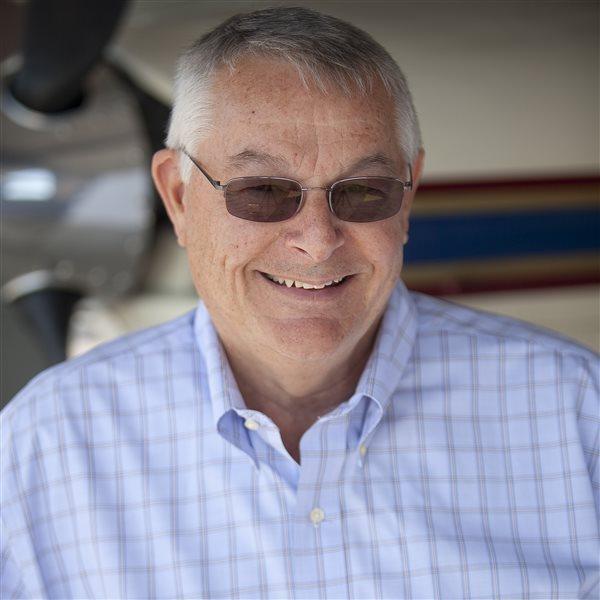Two feet closer to a winning design?
Perceptions are everything in the airplane business. Let a new aircraft get a reputation early on and it may last for as long as the aircraft is produced. That's why Richard Giles, designer of the Giles 200 and 202 aerobatic kitplanes, invited every aerobatic champion he could find to fly the single-seater 200 when it was first developed.
Every flight resulted in a ringing endorsement, no matter whether the pilot was airshow performer Sean D. Tucker, three-time national aerobatic champion Patty Wagstaff, or current national champion Michael Goulian. The 200 wasn't designed just to do aerobatic maneuvers; it was meant to win the big competitions.
The early perception of potential buyers, however, was that perhaps the aircraft was too small to be judged fairly in competition (after all, most competition aerobatic routines begin two-thirds of a mile above the judges). That perception appears to be fading in the United States, but it remains a concern among foreign competitors interviewed at the World Aerobatic Championship (WAC) in Oklahoma City last summer. Perhaps over time that view will prove unfounded. Don't forget, it wasn't too many years ago that the tiny Pitts biplane ruled world aerobatic competition.
The Giles 202 tandem-seat kitplane, new on the market, may not have that size problem; at 19 feet 9 inches, it is 2 feet longer than the 200. If test flights during the WAC and again in Florida in April are any indication, the 202 is not only as good as the 200, it is a world contender.
The aircraft specifications say that anyone up to 6 feet 4 inches and 245 pounds can fit comfortably in the front seat of the aircraft. As I entered the cockpit, a pilot standing nearby-one inch taller than my 6-foot-1-inch, 210-pound frame-warned that he had found headroom a problem on an earlier flight. (He later discovered that he was comfortable in the back cockpit.) However, I found that by sliding down the 45-degree inclined seat as far as possible and pushing the backpack parachute as low on my back as possible, headroom was not a problem. The position was comfortable during high-G maneuvers.
The controls seem Sukhoi-like (lightning fast) in response, and that is quite a compliment, considering that the Russian-built aircraft holds the current world aerobatic title. As with the Sukhoi, the pilot must make small control inputs. Fingertip control and a light touch are needed to avoid overcontrolling.
The roll rate is said to be about 400 degrees per second. I only know that it was wild and could easily roll at 400 degrees per second. Testing to establish G limits is still in progress.
The aircraft performs so well that the student may beg for "just one more roll." I did. It takes little effort to hold the nose on a point during an aileron roll. Advanced students will have no trouble competing in the Unlimited, or highest, class of competition. Vertical penetration (flight straight up) with two on board is less than 2,000 feet but can reach well over 2,500 feet with only the pilot and a light fuel load. The empty weight is less than 1,000 pounds, and power loading is only 6 pounds per horsepower.
I was pleased to discover during the Florida flight that takeoffs were smooth after only two tries, but I forgot about pitch sensitivity on the third and dipped unexpectedly during the climbout. It was as controllable as a Sukhoi but should take less time for the pilot to master. The smoothness of the ailerons rivals that of aerobatic aircraft with a reputation for control harmony.
But will an aerobatic school want to buy a kitplane and build its own trainer? It won't have to. AkroTech Aviation, the company owned by Giles, plans to certify the aircraft in the Primary category. The certification process is expected to take several years to complete. Once it is certified, flight schools will be able to use the aircraft as a trainer and a rental aircraft. Until then the aircraft is experimental, but members of a flying club who are part owners of the aircraft may use it as a trainer. The price is expected to be well under $200,000. However, if purchased as a kit, the airplane costs $56,500, less engine. It can accept engines rated from 150 to 230 horsepower.
The aircraft flown was equipped with a 180-horsepower Lycoming AEIO-360 that had been modified by Lycon of Visalia, California, to produce 220 horsepower. The speed envelope for the 202 ranges from 52 knots, the stall speed, to 191 knots. It cruises at 175 knots and carries 55 gallons of usable fuel. Builders can expect to invest $90,000 and 1,200 hours for a fully completed aircraft. For more information, contact AkroTech Aviation at 503/543-7960.



